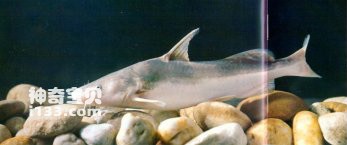Leiocassis longirostris belongs to the order Caturiformes, the family Leiocassis, and the genus Leiocassis. Commonly known as: catfish, Jiangtuan, fat Tuo, fat king fish. English name: Longsnout catfish.
Body long, snout tapered, prominently protruding forward. The mouth is lower, crescent-shaped, with thick lips and small eyes. Must be 4 pairs, small and small. There are no scales, the posterior edges of the hard spines of the dorsal fin and pectoral fin are serrated, the adipose fin is thick, and the caudal fin is deeply bifurcated. The body color is pink, the back is slightly gray, the belly is white, and the fins are gray-black.

It generally lives in the bottom layer of rivers, and also moves in the middle and lower layers of the water body when foraging; in winter, it mostly overwinters in gravelly crevices in the deep water of the main stream. The longnose catfish is a carnivorous fish, and its main food is small fish and aquatic insects. The minimum age to reach sexual maturity is 3 years old, usually 4-5 years old. The adult fish begin to mature from March to April every year, and then go up to the rapids of the river on the gravel bottom to lay eggs. The spawning period is from April to June and declines around August. The number of eggs conceived ranges from 10,000 to more than 100,000 eggs. The spawning grounds of the Yangtze River are concentrated in the meander of the Jingjiang River in the middle reaches and the Tuojiang River in the upper reaches.
The long-snouted catfish is distributed in the Liaohe River, Huaihe River, Yangtze River, Minjiang River to Pearl River and other water systems in eastern China and in western Korea, mainly in the Yangtze River system.
The longnose fish grows very quickly and is the largest fish of its kind. The largest individual can reach 15 kilograms, and the most common ones are 2-4 kilograms. It accounts for a larger proportion of the catch in the Yangtze River Basin, with significantly more fish in the middle and lower reaches than in the upper reaches. Catfish is a large economic fish. Its meat is tender and delicious, rich in fat and has no fine spines. The protein content is 13.7% and the fat is 4.7%. It is known as the top grade freshwater edible fish. The most beautiful thing about this fish is the soft-edged belly. Moreover, its swim bladder is particularly plump and becomes valuable fish maw after drying. The "Bijia Fish Maw" produced in Shishou City, Hubei Province is famous. It has a thick glue layer, pure taste, translucent color, and unique production process. The shape of the dried product and a beautiful natural pattern embedded in the swim bladder look very similar to the Bijia Mountain standing in Shishou City when viewed against the light source. Hence the name "Penholder Fish Maw", and it is said that "this thing can only be found in Shishou and is unique in the world". It is indeed a treasure among foods. As early as the early Ming Dynasty, it was presented as a treasure to Zhu Yuanzhang, the founder of the Ming Dynasty, and has been listed as a tribute ever since. The famous Tang Dynasty poet Du Fu, Song Dynasty poet Su Shi and modern poet Bi Ye all praised it for their poems and articles. However, the resources of the long-tailed catfish in the Yangtze River have been declining in recent years, and the production has dropped sharply. In order to protect and develop this rare fish, the Institute of Hydrobiology of the Chinese Academy of Sciences and the Shishou Special Aquatic Products Research Institute collaborated to tackle key problems, and in 1987 they made breakthrough progress in artificial breeding and breeding technology. The dorsal fin spines and pectoral fins of the catfish have venom glands on them. They are the most poisonous freshwater stinging fish. Severe pain and burning will occur immediately after being stung. The wound will be punctured, torn, bleeding, and locally swollen. In some cases, it will cause fever and pain in the affected area. The itching lasts for half an hour to an hour. Stinging accidents often occur during capture, so be careful.
animal tags:
We created this article in conjunction with AI technology, then made sure it was fact-checked and edited by a Animals Top editor.